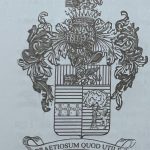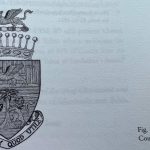Conte’s Preziosi, 1718.
Last Update: 16-04-2023.
The title of Conte Preziosi appears to have been conferred on Giuseppe Preziosi by Victor-Amadeus, King of Sicily, Duke of Savoy &c, and Perpetual Vicar of the Empire, by a patent given at Rivoli on the 19th October 1718. The original patent of creation is stated to have been burnt up during the government of the French Republic. See:- Correspondence and Report of the Commission appointed to enquire into the claims and grievances of the Maltese Nobility, May 1878, presented to both Houses of Parliament by Command of Her Majesty (C.-2033.) (See Report Paras. 173-175. Supplemental Report Part II). The remainder of this title is described by the Commissioners not in the part relative to the Preziosi grant but elsewhere in the part relative to the title of Marchese Testaferrata as follows: King Victor Amadeus himself in the grant of the title of Conte, conferred upon Giuseppe Preziosi, on the 19th October 1718, wishing to exclude from the succession of the grantee’s female issue, ordered that the title was to hold to the grantee and his legitimate and natural male descendants, in lawful wedlock begotten, whether born or to be born. See:- Correspondence and Report of the Commission appointed to enquire into the claims and grievances of the Maltese Nobility, May 1878, presented to both Houses of Parliament by Command of Her Majesty (C.-2033.) (See Report Paras. 122-172). Consequently it follows that female issue is excluded from this title.
Granted to: Captaino Giuseppe Preziosi, Knight of St Mark of Venice.
By: Victor Amadeus, King of Sicily, Duke of Savoy.
On: 1718 at Rivoli, Italy.
With Remainder to: his legitimate and natural male descendants in perpetuity. Some published sources list Gio Francesco Preziosi as the 2nd Conte (in terms of the ius feudale francorum). These sources appear to overlook the fact that Gio. Francesco had an elder brother. Thus the said Gio Francesco is only the 3rd Conte (in terms of the ius feudale francorum) or, more likely, one of the 2nd generation of Conti Preziosi in terms of the ius feudale longobardum.
List of Title holders:
1. Captaino Giuseppe Preziosi, Knight of St Mark of Venice, 1st Conte, succeeded by his son.
2. Conte Gio Francesco Preziosi, 2nd Conte, succeeded by his son.
3. Conte Aloiseo Luigi Preziosi, 3rd Conte, succeeded by his son.
4. Conte Gio Francesco Preziosi, 4th Conte, succeeded by his son.
5. Conte Vittorio Amadeo Preziosi, (d. 1882), 5th Conte, succeeded by his son.
6. Conte Roberto Preziosi, (d. 1917), 6th Conte, succeeded by his cousin.
7. Conte Alfredo Preziosi, (d. 1949), 7th Conte, succeeded by his son.
8. Conte Prof Sir Luigi Preziosi, Kt.Bach, (d. 1965), 8th Conte, succeeded by his son.
9. Conte Dr Franz Preziosi, MD, (d. 2000), 9th Conte, succeeded by his son.
10. Conte Dr Josef Preziosi, MRCS, (1953-, 10th Conte.
Heir: Contessa Marie Christine Preziosi, (1980-.
General Heir: Nobile Elena Bandini Preziosi.
Articles relating to this title:
* Counts Preziosi.
There was in Malta a titled family surnamed Preziosi. The family received prominence for the first time in the 18th century. Many descendants of this family now live outside Malta.
Giuseppe Preziosi was ennobled in 1718 after giving assistance to the King of Sicily (Duke of Savoy) who had been blockaded by the contender for that throne (King of Spain). By that grant, given at Rivoli on the 19 October 1718, the title of “Conte” was conferred to Giuseppe Preziosi by Victor-Amadeus, King of Sicily, Duke of Savoy &c, and Perpetual Vicar of the Empire.
Although the original has already been mislayed by 1878, a copy of the grant was registered in the Chancellory of the Order on the 3 July 1720. It appears that the first count had the prescience of mind to petition Grand Master Zondadari to have the document recorded to prevent any confusion of ever the patent was ‘mislaid’.
His son Francesco broke the family tradition of corsairing and in 1741 he was appointed Secreto of Grand Master Pinto, whom he faithfully served in this capacity for the next 32 years.
The second count appears to have wanted to lived for appearances, probably overspending in the construction of his magnificent villa at Lija. He paid a hefty price. In 1757, the count was obliged to dispose of all his silver treasures as he owed thousands of scudi . Although he was in the employ of the Grand Master, it was this Grand Master who forced him to sell many of his possessions, and ordered the auction of the Count’s precious items to repay some of the larger debts, particularly to the Count’s sister.
Although financially ruined, we later find a Count Martino Preziosi subscribing to the 1810 call for Independence of the Maltese Islands.
However, in the authorized books about the noble families of Malta, one does not find any reference to Martino. These books describe the title of Count being succeeded as follows: Giuseppe (1st Count) – succeeded by his son Gio Francesco (2nd) – succeeded by his son Luigi (3rd) – succeeded by his son Gio Francesco (4th) – succeeded by his son Amadeo (5th) – succeeded by his son Roberto (6th) who died unmarried in 1916 and was succeeded by – his father’s younger brother’s son Alfredo (7th) – succeeded by his son Luigi (8th) and succeeded by his son John Franz (9th).
So who was Martino Preziosi and why is he styled “Count”? – Both answers are easy: Martino was the son of Carlo Preziosi youngest son of Giuseppe. He was entitled to the title because the 1718 grant provides that the title of count was to hold to the grantee and his legitimate and natural male descendants, in lawful wedlock begotten, whether born or to be born.
That means that all of the first count’s male to male issue may enjoy the title of “Count”. Such was the clarity of the grant that it was used as a benchmark to compare the relatively even wider terms of the title of “Marchese Testaferrata”.
Nonetheless a question arose during the course of an official 1878 inquiry conducted by two Maltese judges whether the title of Count Preziosi belongs to the first-born son of the family only, or is to be taken to extend simultaneously to all the male descendents of the original grantee Giuseppe Preziosi. By then several gentlemen claimed that the grant allowed for multiple succession and an initial assessment reckoned that the number of such descendents, exclusive of the males descending from daughters would be nine; but including the male descendents of daughters that number would amount to 59. However, the conclusion of the enquiry was not to the satisfaction of the British Secretary of State for the Colonies and the judges reviewed their opinion by saying that as the title must be regarded as one which is Sicilian in origin and not Savoian, then it is consequently descendible to the firstborn son only, according to the order of Sicilian primogeniture.
In the same authorized books about the noble families of Malta, there is no mention of Roberto (6th Count) having any closer relatives other than the 7th Count. But there is still record showing otherwise. According to Debrett’s Peerage 1886 we find under Preziosi (page 807) that Robert 6th Count had three sisters living: Mathilde married to Mr. Vienne, Catherine married to Mr. Giovanni Castelli and Julia.
Later in Burke’s 1949 edition under Preziosi we find that Mathilde was not only married but had three children of her own, the twins Fernard and Omedie and Iphygenie. Debrett’s mentions that Robert was succeeded by his kinsman Alfredo. After this, the senior line of the Preziosi family appears to be forgotten. Further evidence shows that even Catherine had her own descendants.
There are two ways of looking at this. Either the grant is interpreted in such a way that Ferard being a male descending from a female was not within the terms of the grant, or the grant is understood to mean males only. Either way, the Rule of Sicilian Primogeniture which was foisted on the title in 1878 was not applied. This might also be explained by the fact that meanwhile in 1926 the King of Italy had prohibited any succession through a female line.
In this way the descendants claiming under Vienne, Castelli and Julia who were more senior in descent according to Sicilian Primogeniture, had to give way to the seniormost male to male descendant.



